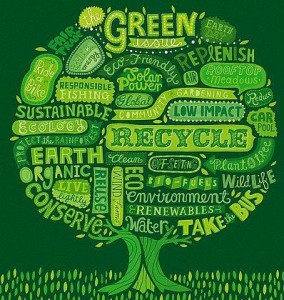Integrating Sustainability and Education
Our planet’s oceans, vegetation and soil are known to absorb 3 Gt of carbon emissions per year, a threshold that was first exceeded in 1968. In 2009, carbon emissions reached 6.6 Gt, a figure that is identified to be more than double of what scientists agree the Earth can withstand. In the absence of actions to counter this perilous trend, it has been estimated that carbon emissions would rise to 14 Gt by 2050. For the planet and its inhabitants, this means accelerating desertification, more natural disasters, reduced crop yields, and serious public health implications.
Current graduates across the world are leaving their universities and entering a world significantly different from the one encountered by their predecessors. In the past few decades the world has experienced rapid change, uncertainty and complexity, revealed through a perplexing collection of global issues –climate change and global warming, poverty, lack of food and energy security, inequality and the list goes on. Since 1880, the average global temperature on Earth has increased by approximately 0.8 degree Celsius and since 1975, two-thirds of this warming has occurred, with a 0.15 – 0.20-degree Celsius rise every decade. The accuracy of these numbers, and the increase in global temperatures is probing people all over the world to question their behaviour and lifestyle. To deal with such diverse crises, graduates need to start employing authentic and innovative sustainable practices into their everyday existence, and for this to happen, awareness of these practices must exist.
Surpassing disciplinary boundaries, integrating environmental sustainability into all realms of education is an essential component while tackling such a situation. It must be understood that for this integration, sustainability should be defined as “a set of conditions whereby human and natural systems can continue indefinitely in a state of mutual well-being, security and survival”. Educating students on environmental sustainability helps in providing them with the accurate skills and knowledge required, to be equipped to handle natural hazards, along with building awareness for students and faculty. It further helps students reflect on their behaviour, teaching them healthier ways of dealing with the consequences of their actions on the environment.
There most definitely exists a challenge while integrating sustainability and education. Several studies have been conducted, across schools and colleges to start the process of integration of environmental sustainability into their curricula, resulting in a positive response, both from the students and teachers. Feedback from these studies have teachers emphasising on how sustainability should not be integrated with an additive approach, instead be infused into each subject so subtly, that the changes go unnoticed. If sustainability is left to be added as an elective, it doesn’t allow students to critically analyse a specific situation with a holistic point of view. It also requires innovative teaching approaches, which first require all teachers to possess the skill and knowledge required to teach these concepts to the students effectively. Sustainability experts and faculty from other colleges could collectively conduct workshops for professors, exchanging best practices in teaching sustainability, and providing them with the right resources to help communicate these concepts to their students in the most effective manner.
Students would be more aware of the technologies and methods to adopt a sustainable lifestyle, if they are introduced to these ideas in the early stages of their education. Thus, this integration of sustainability and education would result in building capacity through an adequately trained work force, to tackle issues of climate change in the most sustainable manner.
Sources:
1. Olivier JGJ et al. (2015), Trends in global CO2 emissions; 2015 Report, The Hague: PBL Netherlands Environmental Assessment Agency; Ispra: European Commission, Joint Research Centre.
2. Hansen, J., R. Ruedy, M. Sato, and K. Lo (2010). Global surface temperature change. Reviews of Geophysics, 48 (RG4004)
3. Jones, P., Selby, D., Sterling, S. (2010). More than the Sum of their Parts? Interdisciplinarity and Sustainability. In: Jones, P., Selby, D., Sterling, S. (eds.) Sustainability Education: Perspectives and Practice across Higher Education. London: Earthscan.
Image Source: http://sustainability.ceres.org.au/resourcesmart/key-documents/




